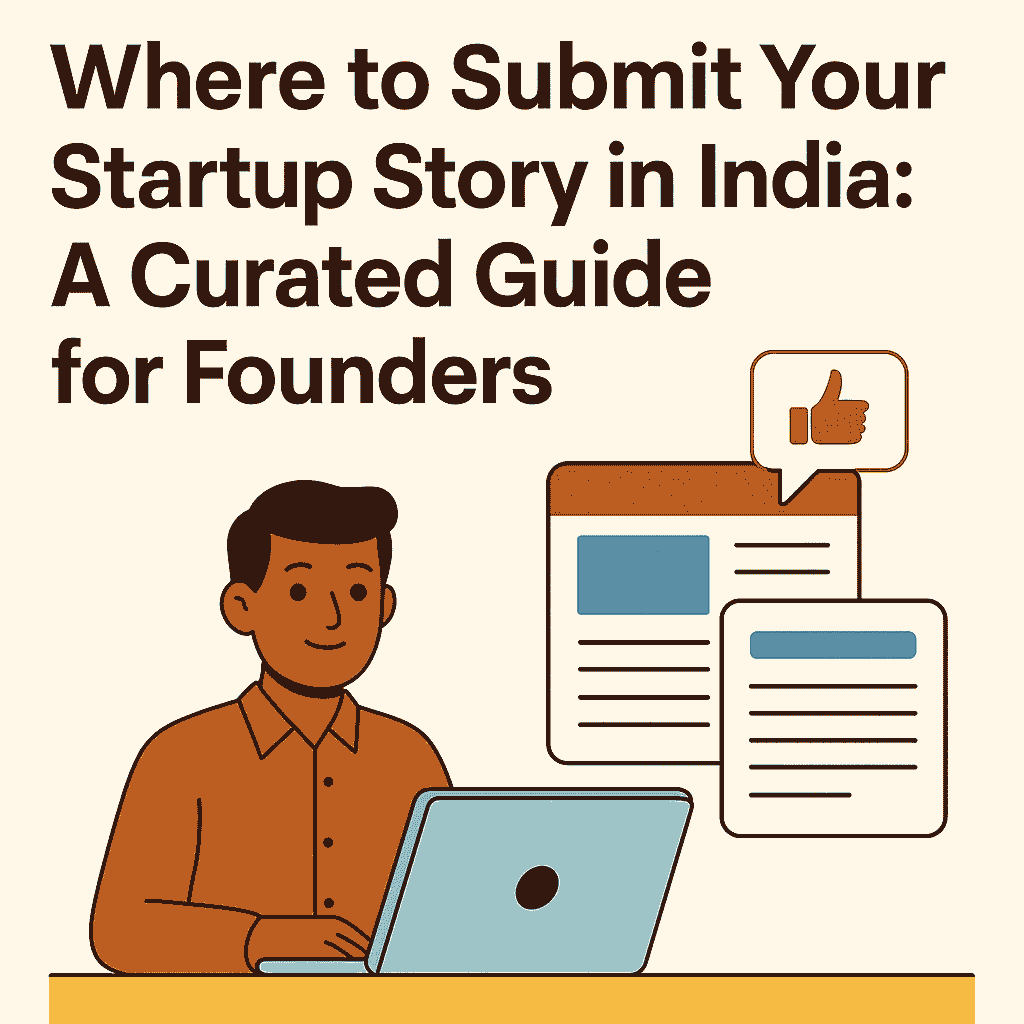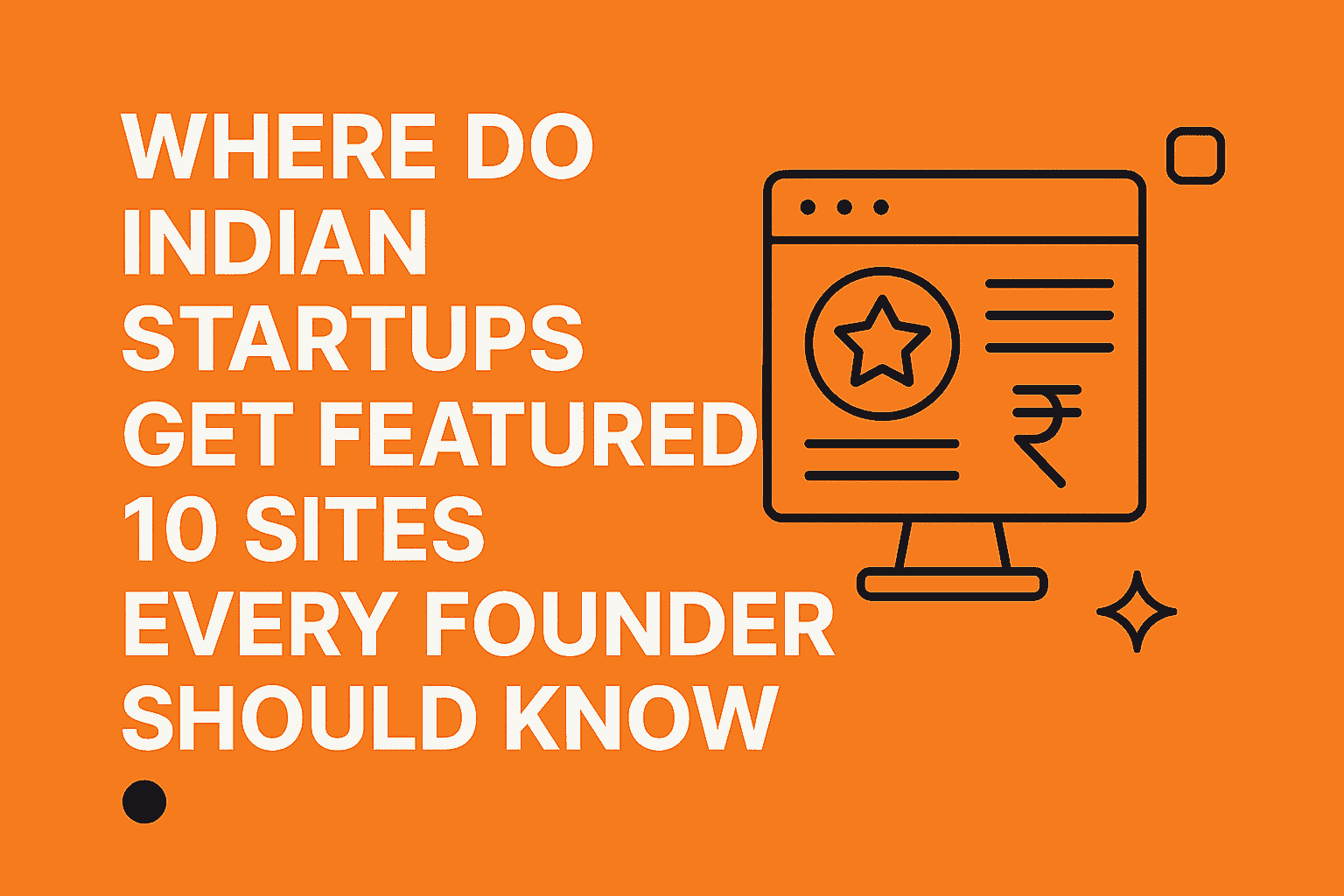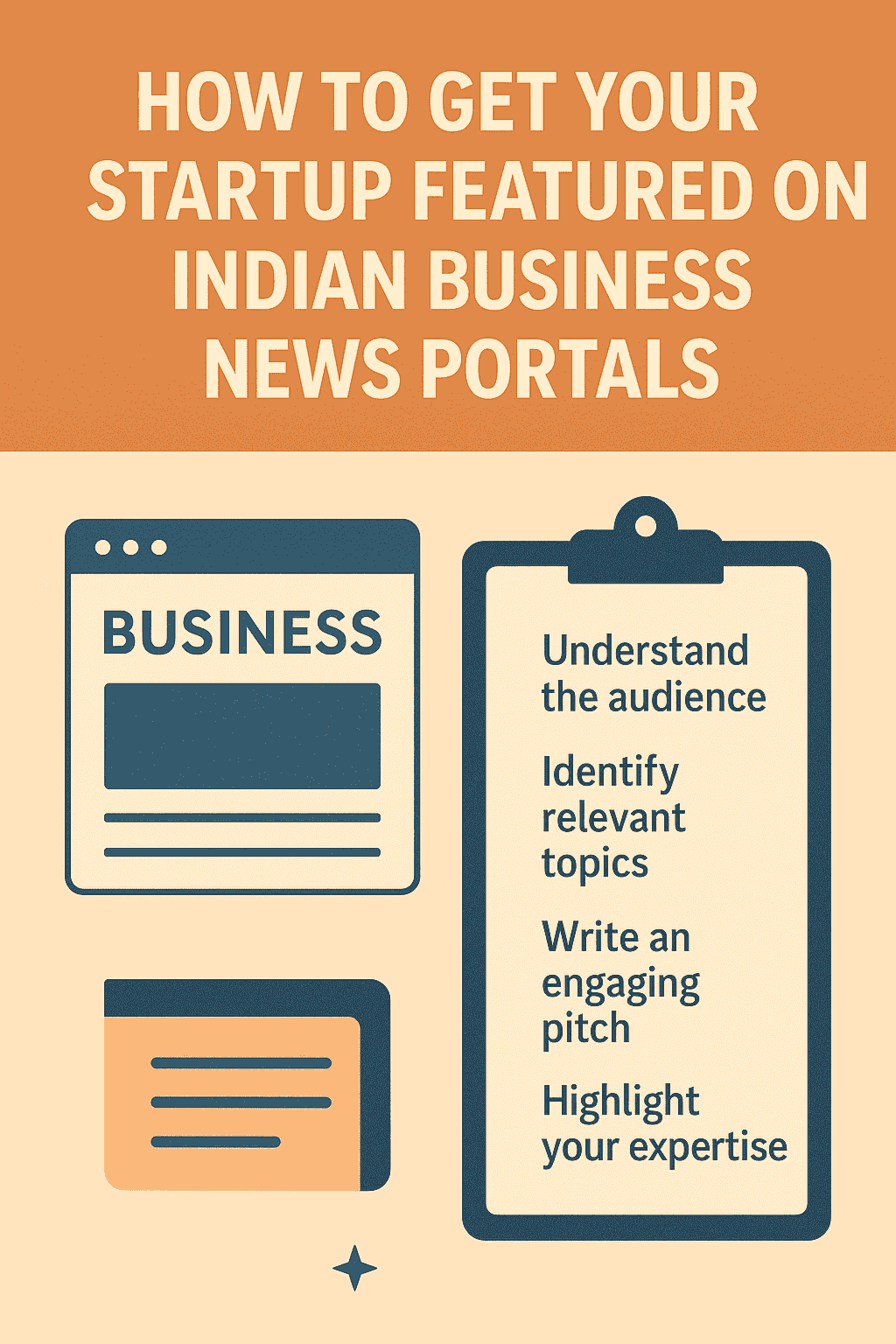In a crowded digital media ecosystem, gaining authentic coverage can be game-changing for startup founders in India. Rather than struggling with impersonal press agencies, savvy entrepreneurs are submitting their stories directly to dedicated startup‑focused platforms. From narrative‑driven profiles to submission‑friendly formats, here’s how you can craft and pitch your story effectively to boost visibility.
Where to Submit Your Startup Story in India: A Curated Guide for Founders
1. The Entrepreneur Today
A platform known for its insights into leadership, values, and strategic growth, this journalistic site welcomes founder narratives that explain why you do what you do, not just what you build.
What they want: Thought leadership pieces about mission, vision, challenges overcome, and meaningful lessons.
Submission tips: Email a concise pitch outlining your personal journey, core learning, and what makes your path unique. Emphasize emotional authenticity over promotion.
Behavioral context: Founders who get featured often adopt a mindset of humility and reflection—describing pivots, mental resilience, and leadership evolution rather than growth charts.
2. The Entrepreneur India
This is the Indian edition of a globally recognized entrepreneurial brand. It features inclusive stories from across geographies, including less represented Tier‑2 or Tier‑3 founders.
What they want: Profiles of people overcoming cultural or infrastructural hurdles, regional innovation, and entrepreneurial grit rooted in local context.
Submission tips: Craft a narrative emphasizing your local perspective—how regional ecosystem, cultural norms, or personal background shaped your entrepreneurial ethos.
Behavioral context: Successful submissions come from founders willing to speak candidly about constraints—family dynamics, education challenges, or legacy industries—and how they turned those into strengths.
3. Startup Chronicle
Focused on in‑depth storytelling and ecosystem trends, this site showcases founders building intelligently and sustainably.
What they want: Well‑structured founder stories showing strategic thinking: why you chose your problem, how you iterated, and what broader patterns your journey reflects.
Submission tips: Send a brief theme‑driven pitch (e.g., building a solution in neglected sectors, navigating regulatory realities, or innovating through scarcity). Include context or data if possible.
Behavioral context: Founders featured here tend to think analytically—they share insights about market gaps, sector evolution, or pivot decisions with clarity and depth.
4. Startup Magazine
Tailored toward practical growth insights, this platform typically publishes founder interviews and articles that balance experience with advice.
What they want: Content around building teams, launching products, refining processes, scaling units, and learning from mistakes. Format can be interview-style or authored by the founder.
Submission tips: Approach with a strong ‘lessons‑learned’ angle written in founder-first voice. Outline key takeaways up front: what went wrong, how you recovered, and how others can benefit.
Behavioral context: Interviewees are candid, self-aware, and value transparency—they admit failures, share coping strategies, and mentor through mistakes.
5. Startup Updates
This platform emphasizes real-time, milestone-driven coverage, but doesn’t require formal agency facilitation.
What they want: News‑style posts about product launches, technology prototypes, team growth, entrance into new geographies, or partnerships.
Submission tips: Write your own press‑release styled text using standard headings—what, why, who, and how—and send directly to the editorial submission route. Avoid marketing fluff.
Behavioral context: Founders featured here are proactive—small ventures who treat their progress as newsworthy, and take time to structure their own announcements in a journalist-friendly format.
6. Startup Times
Blending breaking‑style updates with opinion and founder stories, the site positions itself as a voice of both trendspotting and in‑depth exploration.
What they want: Founder perspectives on emergent trends, product pivots, industry shifts, or tech disruption paired with actionable insights.
Submission tips: Pitch a founder viewpoint piece on a trend or issue—e.g. challenges of sustainability models, community engagement, or deep tech adoption in grassroots contexts. Write in an argumentative yet reflective tone.
Behavioral context: Contributors share insights with analytical clarity and a sense of awareness about macro‑ecosystem evolution; they don’t just narrate—they contextualize.
7. Entrepreneur Tales
This storytelling‑first portal is explicitly designed to uplift entrepreneurial journeys rooted in resilience and creativity, often with local or emotional resonance.
What they want: Heartfelt personal stories—from humble beginnings to community impact—not necessarily tied to scale or funding.
Submission tips: Use their “Submit Your Story” option: write a narrative focusing on your motivations, adversity faced, and mission-driven purpose. Avoid technical jargon; write emotionally.
Behavioral context: Founders who submit here often emphasize social impact, personal transformation, or community upliftment. They care more about meaning than metrics.
8. Submission Behavior & Personal Positioning
Crafting a Founder-Centric Narrative
Successful storytelling platforms prefer narrative authenticity over classical PR spin. Founders who get featured frequently:
Speak through real conflict or failure—not success brag—but with clarity about lessons learned.
Use a cosy, conversational tone—even in structured submission forms—to establish human connection.
Provide compelling opening lines: unusual origin story, gut-level pivot, or poignant reflection.
Engaging Editors directly
Across these platforms, the most effective founders often:
Research individual editors or editorial email IDs—gathered from contact pages or previous bylines.
Follow them on LinkedIn or X, comment on related articles, and mention a connection or context in pitch.
Keep follow-ups polite, concise, and value-oriented—not desperate.
Self-submitted Press‑Releases & Guest Articles
Many platforms support self-service pitches. Founders who write their own compatible press‑release or insight piece:
Use widely available online templates.
Keep them simple: short headline, context, founder quote, and clear customer or ecosystem benefit.
Send to “submit story” or “contact us” channels—avoiding generic mass email blasts. Editor notes: Making it easy for journalists to copy-edit helps.
9. Building Visibility Over Time
Leveraging Event Coverage
Participation in startup events, pitch competitions, or local innovation forums can act as a pipeline to editorial picks—media sites often spot or syndicate from such forums. Founders attending these get attention even without PR agencies.
Amplifying Coverage for Momentum
After your story publishes:
- Share it on social media—tagging platform and author.
- Add it to your startup deck or website.
- Reference it in further pitches or investor discussions.
10. Why These Platforms Make Sense in 2025
- Low barrier to entry: No retainer needed. Submissions are often self-managed, accessible, and open‑ended.
- Focus on authenticity: Instead of polished agency copy, they value founder voice and direct insight.
- Diverse audience: From industry analysts to ecosystem enablers, these platforms reach multi-tier readership—from investors to local mentors.
- Credibility through specialization: Each site has editorial identity—leadership features, regional impact, storytelling, trend analysis—so founders can match narrative to platform.
- Long-term ecosystem value: Collectively, they contribute to stronger founder visibility without agency fees, and promote a culture of inclusive media participation.
Sample Submission Walk‑Through
A. Thought leadership pitch to a leadership‑focused editorial site
- Subject line (email): Founder reflection: “Turning Familiar Roots into Purpose‑Driven Innovation”
- Body:
- Single‑line mention of why you’re writing (e.g. personal values-led model).
- Brief summary of your founding backstory without company names.
- Key personal lesson or strategy you’d share with other founders (e.g. the importance of family‑based innovation, or bootstrapping from small‑town constraints).
- Offer to submit a draft or co‑write via interview.
- Single‑line mention of why you’re writing (e.g. personal values-led model).
B. Self‑written press‑release submission for a updates‑oriented platform
- Headline: Startup from small city launches new platform to connect local artisans to digital audiences
- Elements:
- One‑sentence context about founder motivation.
- What the initiative delivers or improves in the ecosystem.
- Founder quote: personal reflection about why this matters.
- Call‑to‑action: link or contact for more information.
- One‑sentence context about founder motivation.
Send via designated submission email or “Submit Story” form. Attach only clean text—clear and journalistic.
By mid‑2025, Indian startup founders increasingly see that they can be their own media—writing, pitching, and narrating their personal journeys independently. Platforms like The Entrepreneur Today, The Entrepreneur India, Startup Chronicle, Startup Magazine, Startup Updates, Startup Times, and Entrepreneur Tales offer curated avenues for founders willing to tell honest, skillful, and context-rich stories.
Mastering founder‑centric storytelling, low-effort DIY submissions, and strategic networking with editors gives you access to meaningful coverage—without agency cost. Submit with authenticity. Think in narratives. And amplify every published piece to build sustained momentum.



